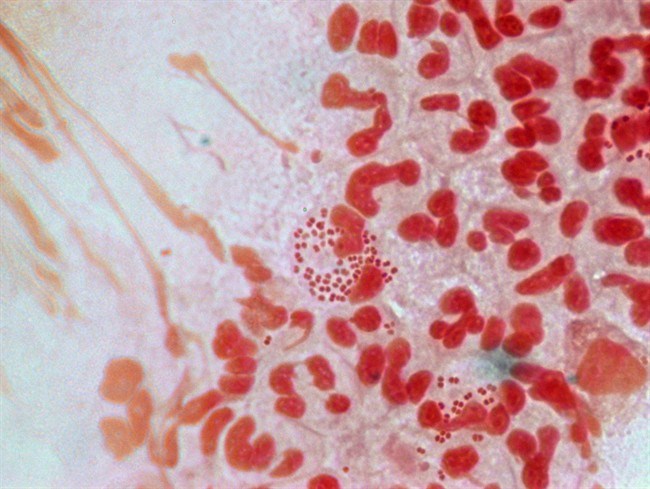TORONTO, Cananda - The last oral antibiotic used to treat gonorrhea failed to cure the infection in about seven per cent of tested cases in a study in Toronto, a figure the authors of the work called "relatively high."
The report, published Tuesday in the Journal of the American Medical Association, is believed to be the first from North America of treatment failure with the antibiotic, cefixime. And it is the latest reminder that in the battle with this sexually transmitted infection, the bug is winning — and fast.
It raises concerns that convenient approaches for treating gonorrhea may soon be out of reach — a development that could lead to fewer people undergoing successful treatment for the infection.
The lead author, Dr. Vanessa Allen, said Ontario is mulling over following the lead of the United States and Europe and recommending that doctors routinely treat gonorrhea with an injectable antibiotic rather than the current pill.
But she said there has been pushback from clinicians, who fear there will be consequences of making treatment more onerous.
"The last thing we want ... is for people not to come in and get diagnosed and treated. And in that way, it really is ... a struggle," said Allen, a medical microbiologist and infectious diseases consultant with Public Health Ontario, the province's public health agency.
"It's a tradeoff between trying to make it the most accessible care and the most effective."
Though unwelcome, the results are not a surprise. A strain of gonorrhea that has shown reduced susceptibility to cefixime has been making its way around the globe.
Since the medical community first started using antibiotics to treat gonorrhea in the 1940s, the bacteria have progressively worked their way through class after class of the precious drugs.
Allen said the Toronto findings are likely not unique to the city. Most clinics that treat gonorrhea don't take samples of bacteria from patients to see if they are resistant or susceptible to the drugs, so the full picture of how far the resistant strain has spread is not known.
British Columbia has also seen a few such cases, though they have not yet published findings in a medical journal, said Dr. Linda Hoang, a medical microbiologist with the British Columbia Centre for Disease Control.
Hoang said BCCDC would not classify the two or three cases it has seen as treatment failure, because the infections were eventually cleared using a higher-than-standard dose of cefixime.
Still, she said the Ontario report is a reminder that public health authorities needs to take action to protect the few antibiotics left that can cure this infection, which can cause infertility and even death in some cases.
"It would be a major concern to have untreatable gonorrhea," Hoang said from 91ԭ��.
"So we want to be proactive. And before this gets totally out of hand we want to make sure that the focus is on prevention and good surveillance."
In this study, Allen and colleagues looked at data on 291 gonorrhea patients who sought treatment at a Toronto clinic that takes samples to test if the bacteria causing the infection is susceptible to cefixime. The clinic also requires patients to come back a few weeks later to do a test to see if they are cured.
Only 133 patients came back. Of them, 13 still had gonorrhea. In nine cases, it was determined that the reason for the persistent infection was that cefixime had not cleared the infection.
All nine people were eventually cured. Six were successfully treated with an injectable antibiotic, ceftriaxone, and the remaining three were cured with a double dose of oral cefixime.
Because of the spread of this resistant strain, many jurisdictions including the United States and Britain have moved away from using cefixime for gonorrhea.
The U.S. Centers for Disease Control, for example, recently changed its recommendations, advising doctors to treat with injectable ceftriaxone in combination with either azithromycin or doxycycline, both of which are oral antibiotics.
The Public Health Agency of Canada is working on updating its guidance to 91ԭ�� doctors.
Allen said Ontario is leaning towards a variation of the U.S. guidance.
"We're strongly looking at ceftriaxone and azithromycin given these failures with cefixime," she said, but noted Public Health Ontario is going to consult with service providers before making any move.
Shifting to an injectable drug as the first line treatment for gonorrhea will create lots of challenges, Allen admitted.
For instance, currently when a person tests positive for gonorrhea, some clinics offer what's called "expedited partner therapy." Instead of requiring the person's sexual contacts to come in for testing, the person is given antibiotics for the partner or partners too.
"But if you can't give a pill, that whole program is threatened," Allen said.

